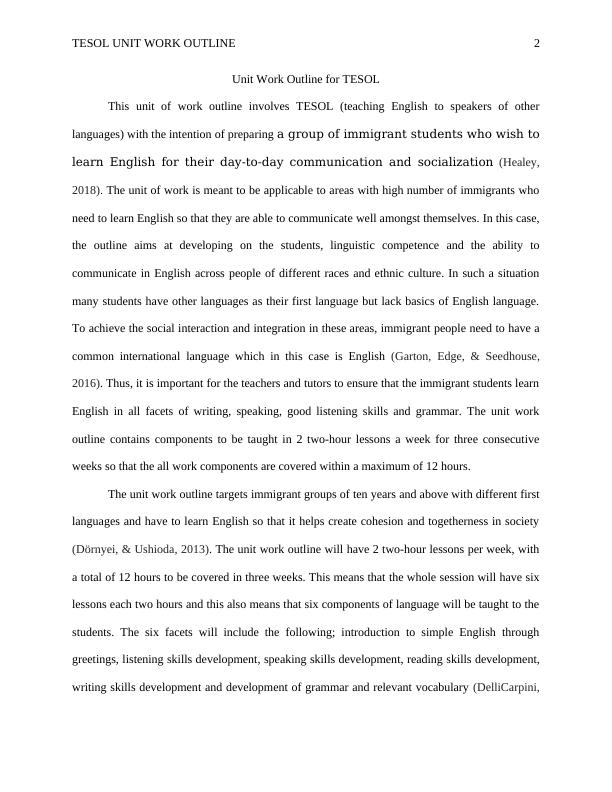Unit Work Outline for TESOL
The aim of ELT has shifted towards enabling learners to produce language appropriate in real-life situations. Text-based syllabus design is based on an approach that teaches explicitly about language structures and grammatical features in a certain context, links spoken and written texts to a cultural context, and provides guided practice to students while they move through the stages.
Added on 2023-01-12
About This Document
Unit Work Outline for TESOL
The aim of ELT has shifted towards enabling learners to produce language appropriate in real-life situations. Text-based syllabus design is based on an approach that teaches explicitly about language structures and grammatical features in a certain context, links spoken and written texts to a cultural context, and provides guided practice to students while they move through the stages.
Added on 2023-01-12
End of preview
Want to access all the pages? Upload your documents or become a member.



